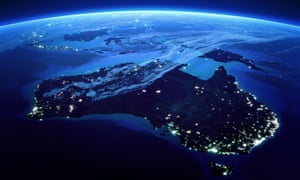Extract from The Guardian
State and federal governments to confirm that 14 lake sites have been earmarked
Pumped hydro projects generating energy at twice the scale of the much-vaunted Snowy 2.0 scheme will be identified across Tasmania on Wednesday, with modelling suggesting the proposal could deliver thousands of jobs between now and 2028.
The Turnbull and Hodgman governments will confirm that 14 pumped hydro sites have been earmarked across the state with a combined potential generation capacity of up to 4,800 megawatts.
The projects add to Tasmania’s “battery of the nation” concept – a plan to double the state’s renewable energy capacity by developing pumped hydro energy storage, building windfarms and upgrading existing generation assets.
Under the plan, renewable energy would be exported to the mainland if a planned second interconnector goes ahead.
During his visit to Tasmania, the energy minister, Josh Frydenberg,
is also expected to unveil support for a windfarm project in the
marginal seat of Braddon, which is one of the seats being contested in
the so-called “super Saturday” byelection contests. The Labor leader,
Bill Shorten, has been campaigning in the seat over the past few days.
In April the Turnbull government allocated $2.5m to a feasibility study examining the possible replacement of the Tarraleah power station, and the viability of separate pumped hydro projects, including four adding about 2,500MW hours, which would nearly double the capacity of Tasmania’s hydro system.
Pumped hydro storage works by pumping from a lower reservoir into a higher reservoir when energy is cheap and then dropping the water downhill through a turbine to create electricity when energy is expensive and in high demand.
Frydenberg said in a statement before Wednesday’s announcement that identifying the optimal sites, “along with the business case study for a second Tasmanian interconnector”, would improve the affordability and reliability of the national electricity market.
“The next step for the 14 high potential sites is a 12-month pre-feasibility assessment, including surveying to the highest available accuracy, modelling of both the market and water resource and identifying environmental, cultural and social impacts,” the energy minister said.
Funding to identify the Tasmanian sites was provided through the Australian Renewable Energy Agency. Thirty potential sites were identified, with 14 lake sites classified as high potential.
The federal and state governments have also jointly funded the business case for the second interconnector, to the tune of $20m.
Economic modelling conducted as part of the “battery of the nation” proposal suggests it would create up to $5bn in new investment and 3,000 regional jobs.
The Turnbull and Hodgman governments will confirm that 14 pumped hydro sites have been earmarked across the state with a combined potential generation capacity of up to 4,800 megawatts.
The projects add to Tasmania’s “battery of the nation” concept – a plan to double the state’s renewable energy capacity by developing pumped hydro energy storage, building windfarms and upgrading existing generation assets.
Under the plan, renewable energy would be exported to the mainland if a planned second interconnector goes ahead.
In April the Turnbull government allocated $2.5m to a feasibility study examining the possible replacement of the Tarraleah power station, and the viability of separate pumped hydro projects, including four adding about 2,500MW hours, which would nearly double the capacity of Tasmania’s hydro system.
Pumped hydro storage works by pumping from a lower reservoir into a higher reservoir when energy is cheap and then dropping the water downhill through a turbine to create electricity when energy is expensive and in high demand.
Frydenberg said in a statement before Wednesday’s announcement that identifying the optimal sites, “along with the business case study for a second Tasmanian interconnector”, would improve the affordability and reliability of the national electricity market.
“The next step for the 14 high potential sites is a 12-month pre-feasibility assessment, including surveying to the highest available accuracy, modelling of both the market and water resource and identifying environmental, cultural and social impacts,” the energy minister said.
Funding to identify the Tasmanian sites was provided through the Australian Renewable Energy Agency. Thirty potential sites were identified, with 14 lake sites classified as high potential.
The federal and state governments have also jointly funded the business case for the second interconnector, to the tune of $20m.
Economic modelling conducted as part of the “battery of the nation” proposal suggests it would create up to $5bn in new investment and 3,000 regional jobs.

No comments:
Post a Comment